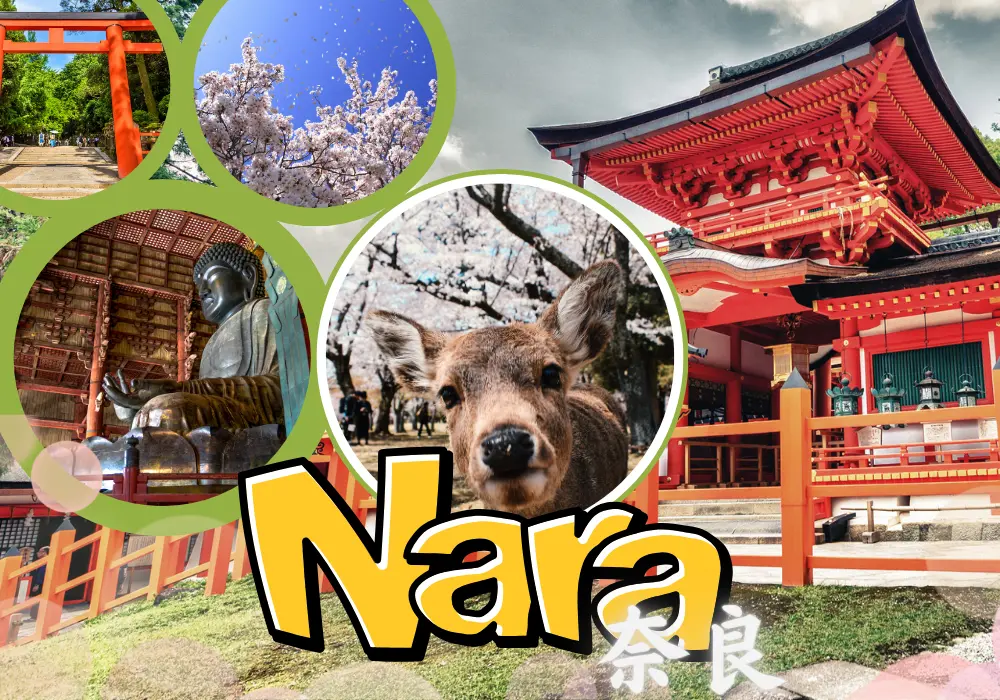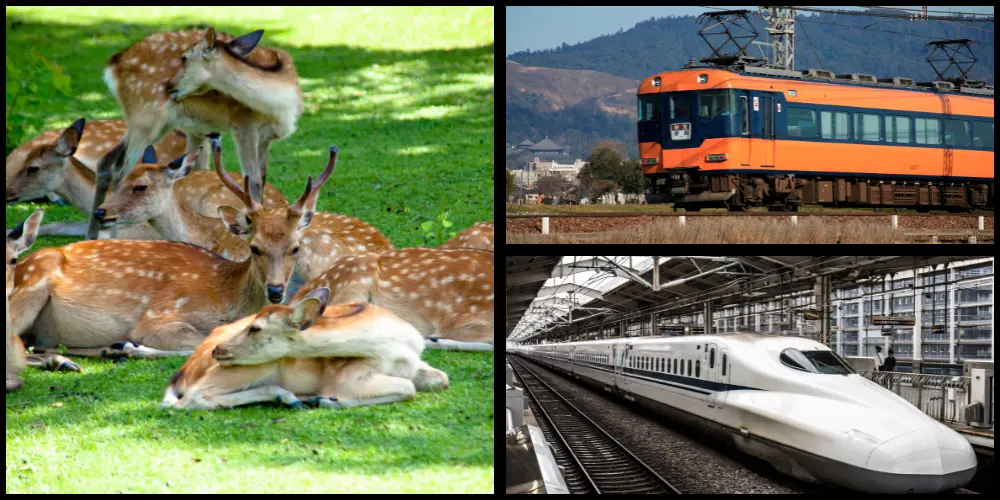Visiting Nara is a journey through time, akin to exploring Kyoto.
Known for its historic temples, tranquil gardens, and freely roaming deer, Nara offers a glimpse into Japan’s ancient spirit. This article explores the charm of Nara, showcasing its cultural depth and popular spots.
Discovering Nara: A Journey Through Japan’s Timeless Spirit

Surrounded by verdant mountains, Nara stands as Japan’s first permanent capital, yet it is a living museum of history and tradition.
Here, ancient temples maintain their solemn beauty, while sacred deer roam freely, guarding the city’s spiritual heritage. From the majestic Todai-ji Temple, which houses the world’s largest bronze Buddha, to the quietly elegant Kasuga Taisha Shrine, illuminated by lanterns, we guide you through Nara’s iconic landscapes.
This journey through the timeless allure of Nara will provide a profound experience and lasting memories in Japan.
Nara, Guarded by Deer: The Sacred Messengers
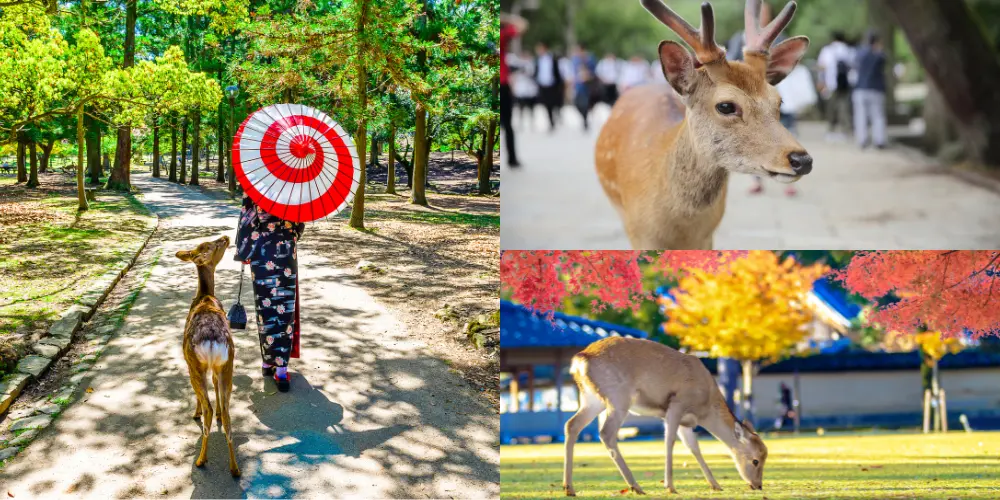
When you think of Nara, you may have seen photos of interacting with deer.
Here in Nara, deer are not merely wild animals; they have been revered as divine messengers for centuries, playing a special role in culture and history. The 1,200 deer that roam freely in Nara Park and its surroundings are designated as national natural monuments, welcoming visitors.
Since the Nara period, deer have been considered sacred emissaries of Kasuga Taisha, the guardian deity of the region, and have been featured in numerous legends and stories. It is famously said that when gods descended to Nara, they appeared riding on deer. Hence, deer have been respected and protected as sacred beings.
Visitors can buy deer crackers to interact with these friendly creatures. However, this interaction is more than just a fun experience; it serves as an opportunity to understand and respect the significance of deer in Nara’s natural and historical context.
Exploring Nara’s History: Must-Visit Ancient Buildings and Sites
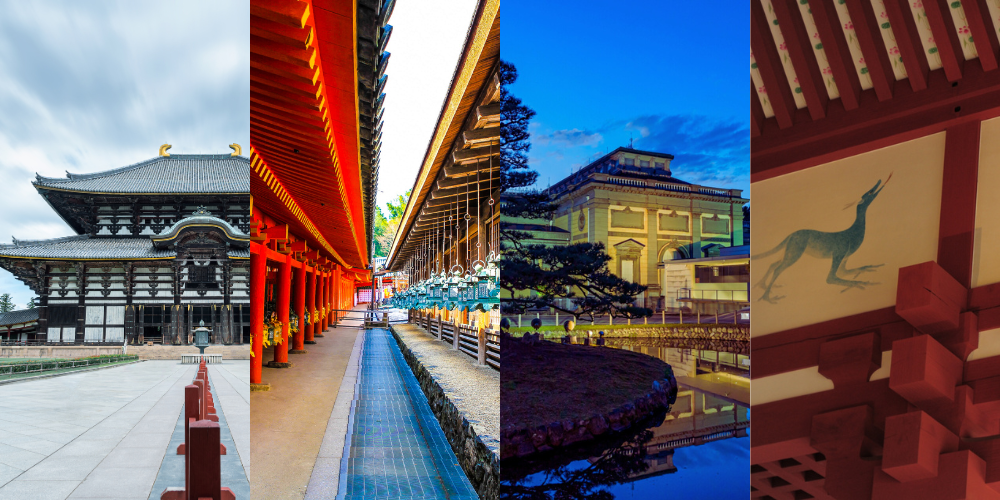
Nara, as Japan’s first permanent capital, offers a broad experience of the country’s historical buildings and heritage. One of the most iconic locations is Todai-ji Temple. Here lies the world’s largest bronze statue of the Buddha, housed within one of the largest wooden structures in the world.
Nearby, Kasuga Taisha Shrine creates a magical atmosphere, especially at dusk when hundreds of lanterns light the pathways. Kofuku-ji Temple, with its impressive five-storied pagoda, showcases the mastery of ancient Japanese architectural techniques and has been an important religious site since its foundation.
Additionally, the Nara National Museum provides insights into Nara’s artistic achievements and cultural history through its extensive collection of Buddhist art and artifacts.
Finally, the Heijo Palace Site, once the center of imperial life in Nara, is now open to the public, allowing visitors to stroll through the remnants of Japan’s historical past.
These sites have played a central role in Nara’s significance in Japanese history.
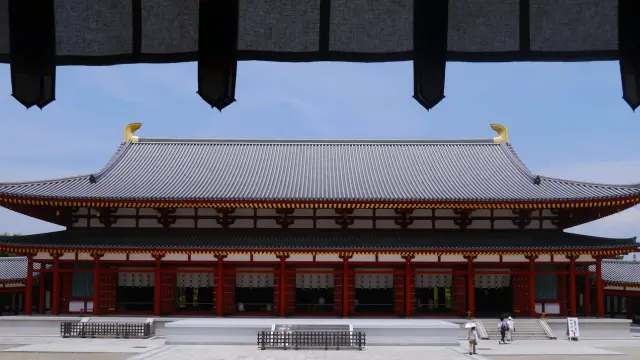
Ranking of Popular Tourists Destination in Nara
- Nara Park: Vast park with free-roaming deer.
- Todai-ji Temple: Historic temple with giant Buddha.
- Kasuga Taisha Shrine: Ancient shrine with many lanterns.
- Great Buddha Hall at Todai-ji: Iconic hall housing a huge Buddha.
- Kofuku-ji Temple: Temple known for its five-story pagoda.
Nara Culinary Culture
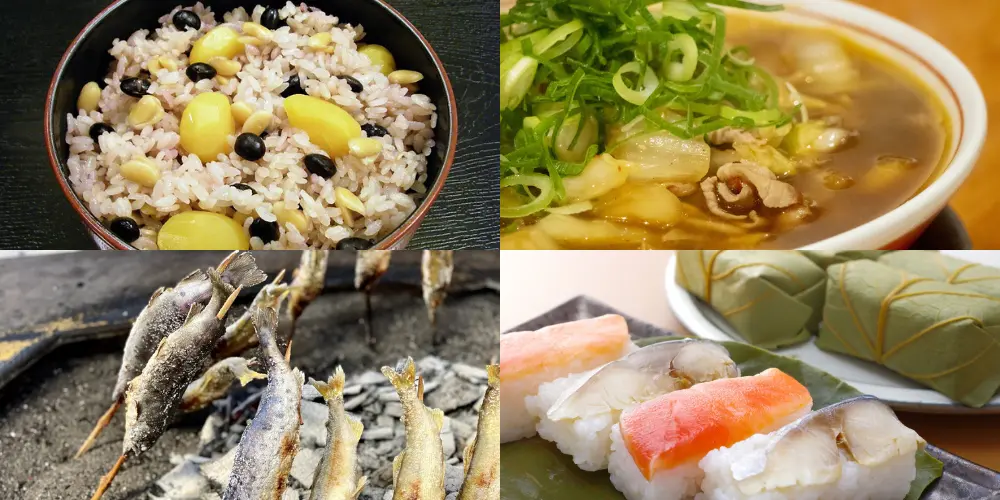
Japanese cuisine is unique and varied, and Nara’s culinary culture beautifully merges tradition with modern flavors.
Tea Rice(top left) is made with locally grown tea leaves, cooked into the rice to spread the rich flavor of the tea. This dish uses tea leaves cultivated in Nara’s tea fields, noted for their aromatic and flavorful qualities.
Grilled Ayu with Salt(bottom left) uses sweet fish caught in Nara’s clear streams, simply grilled with salt to enhance its flavorful and aromatic qualities.
Tenri Ramen(top right), originating from the Tenri area is known for its simple yet deep-flavored soup and distinctive noodles, a local favorite cherished by the community.
Kakinoha Sushi(bottom right) is a Nara specialty, where vinegar rice and fish such as mackerel or salmon are wrapped in persimmon leaves, enhancing the unique fragrance and flavor.
Through these dishes, you can glimpse the rich culinary culture here.
Access and Transportation to Kyoto
How to Access to Nara?
From Tokyo, the fastest way to Nara is by taking the Shinkansen to either Kyoto Station or Shin-Osaka Station, and then transferring to the JR Nara Line or the Kintetsu Nara Line, with a total travel time of about 2.5 to 3 hours. From Osaka, it takes about 30 to 45 minutes using either JR or Kintetsu lines.
Within Nara Prefecture, Nara Kotsu buses operate extensively, providing efficient access to tourist sites with a day pass. Additionally, rental bicycles are available around Nara Park, offering a convenient way to explore the city freely. Major tourist spots within the city are also easily accessible on foot.

Tokyo to Osaka: How to Get There?
We’ll introduce you to the access methods and key points of traveling from Tokyo to Osaka.
Accommodation Options
Nara offers a variety of accommodation options.
You can choose from hotels and ryokans located in the city center to quieter guesthouses in the suburbs, depending on your budget and preferences. Staying in a traditional Japanese inn (ryokan) allows you to experience Nara’s culture up close.
Best Time to Visit
Nara is beautiful in all four seasons, but the cherry blossom season in early April and the autumn foliage from mid-November to early December are particularly spectacular.
During these periods, Nara Park and the historical temples become even more attractive. Summer can be hot, and winter is relatively mild; these seasons see fewer tourists, allowing for a more relaxed sightseeing experience.
Visit Nara, Japanese Historical Place

Nara is an excellent place to experience Japan’s rich cultural heritage, offering a unique combination of ancient history and natural beauty. Visitors can enjoy old temples and seasonal landscapes, providing peace and enriching experiences. Convenient access and a variety of accommodation options add to its appeal.
Be sure to witness Nara’s timeless charm for yourself.
【Related Articles】
- Discover the Friendly, Fun and Delicious of Osaka – Enigmatic Japan Info
- Osaka Castle and Its Surrounding Park – Enigmatic Japan Info
- Ancient Kyoto – An Experience Beyond Time – Enigmatic Japan Info
- Osaka Umeda Nightlife: 6 Must-Visit Spots ー Enigmatic Japan Info
- Tokyo to Osaka: How to Get There?ー Enigmatic Japan Info
- Kobe: A Cosmopolitan Gateway in Hyogo ー Enigmatic Japan Info
- Shinsaibashisuji Quick Guide: Shopping Hours ー Enigmatic Japan Info
- Wakayama: Land of Natural Wonders ー Enigmatic Japan Info
